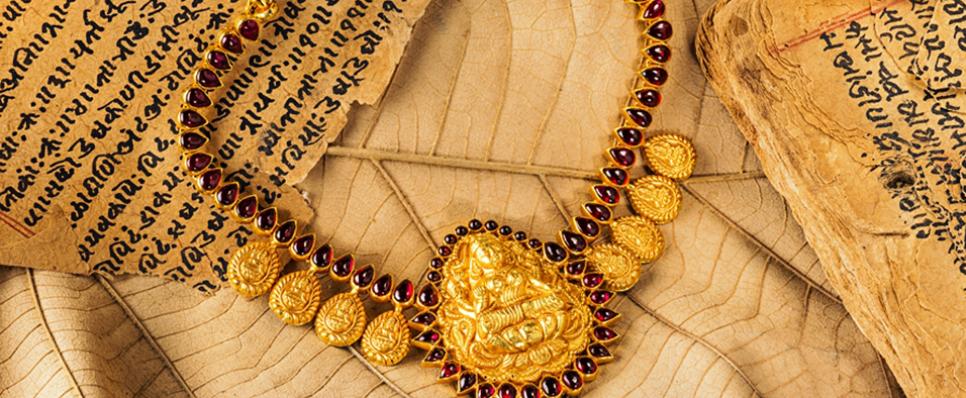Published: 28 Aug 2017
Birth of jewellery in India

What if jewellery could speak?
They could tell us the stories of their birth in their home deep inside the earth, and their travel to various workshops and ateliers. Traded, transported over distances, exchanged from one owner to another. The world’s jewellery has seen everything - different emotions, culture, people from across the globe.
The roots of jewellery in India are as old as the country itself. Nearly 5,000 years ago, a desire to look beautiful with adornments gave birth to jewellery. Both men and women were equally fascinated with jewellery. It is believed that the Gods and Goddesses were adorned with jewellery which inspired people to follow them. The Puranas and Vedic texts praise the appearance of Gods and Goddesses adorned with jewellery crafted from gold.
With time, gold jewellery became a means to show the owner’s financial status in the society. The more gold a woman possessed, the more wealth she was assumed to have. It also meant that her husband adored her and was capable of taking care of her needs. The art of creating gold jewellery progressed and traditional forms made way for more elaborate artworks, designs and patterns.
Gold slowly became a major form of expressing one’s mood, especially through different dance forms like Kuchipudi, Kathak or Bharatnatyam. Dancers would wear intricately designed gold jewellery which was as much a part of the dance as their movement and expressions. Gold also became a symbol of royalty, and royal families reinforced the popularity of gold by filling their palaces with exquisite and lavish heirlooms made by the most skilled and celebrated craftsmen.
Gold jewellery is also seen as a method to secure the future of the women of the family. At the time of their marriage, daughters are given gold jewellery known as Streedhan (women’s wealth) by their parents, to help them in case they ever face a financial crisis. Certain ornaments such as the Mangalsutra, Kangan and Maang Teeka are synonymous with the traditional appearance of a married woman. Similarly, babies are given expensive gold jewellery as a part of their birth rituals, as a form of security for their future.
Modern jewellery has evolved over time with the changes in society. The intricate heavy jewellery is now worn only during weddings, festivals or similar grand occasions. The modern Indian woman prefers light but sturdy gold jewellery items for their daily usage.
The trend, however, is different in rural India which still considers gold both for adornment and investment. This is mainly because gold is considered as the most liquid form of an asset and other forms of investment are still in their infancy stage in rural India.
The jewellery, since its birth, has been extensively favoured across India as well as the world, and the fascination for gold continues to remain the same. The design and trends will change, but gold is here to stay forever.











